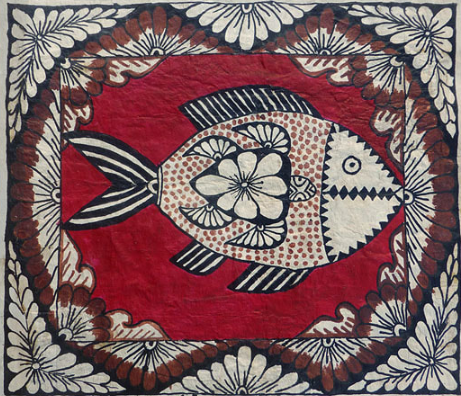This term out class is learning about Tonga, this week and last week we have had the task of write a piece of writing similar to an information report about the Ngatu. Something I enjoyed was Learning about the Ngatu, something I did well was the piece of writing and something I could do better next time would be to add more pictures. Here are some links to more information about Ngatu: Link 1, Link 2, Link 3, here is a link to some more patterns that can be on Ngatu: Link 4
_________________________________________________________________________________
Ngatu
Ngatu is the Tongan word for tapa cloth, it is originated from the Pacific Islands, it is a cloth made from different materials. Today you will be told a bit more about what is Ngatu, how is it made it and why it’s so important.
The Ngatu is really significant and special in many different ways, it is used for: ceremonies, birthdays, births, funerals, it can also be used for blankets, cloths, clothes and kites. It takes a lot of work to make Ngatu.
There are some very important steps to make Ngatu:
Step 1: Take off the skin from the tutu tree (mulberry tree)
Step 2: Soak the skin in water
Step 3: Beat the skin with a sick called ike, the long stick that they beat it on is called tatua
Step 4: Use the skin to make feta`aki
Step 5: Compile it and start beating again
Step 6: Glue the fabric and the feta`aki together (fabric on the bottom and feta`aki on the top)
Step 7: Or glue tapa on the bottom and tapa on the top) (traditional)
Step 8: Base colour and drawings (wiping paint from the cocoa tree)
Step 9: Kupesi (itched patterns that are built into the ngatu tables)
Step 10: The woman mark the lengths as they go according to the amount of kupesi divisions drawn (langanga)
Step 11: Roll the ngatu out so it can dry in the sun.
Step 12: Finally the woman will darken the kupesi patterns free handed.
As you can see there are a lot of steps to make the Ngatu, in fact this process can take anywhere from two hours to two days. Each person has a certain job so the process is faster, one of the most important jobs is at the end when they let the Ngatu dry a woman shouts out directions to make sure it is straight.
When it comes to designing the Ngatu there are many different designs you can do, there are more common ones such as: the lion, dove and the Tongan shield, different villages have different designs depending on what feels closer to them. This is my Ngatu design:
In conclusion Ngatu is a very a traditional and important piece of material, and it means a lot to people, it brings out their culture and is useful in all different ceremonies.
Here are some more images of patterns that can be used on Ngatu:

-
This is a Ngatu with traditional motifs from the Seventies,celebrating the harvest of the islands.

-
This is a pattern of a turtle which is a big part of the tongan culture

-
This is a flower incorporated fish that is very important to Tonga
This is a Ngatu with traditional motifs from the Seventies,celebrating the harvest of the islands.
This is a pattern of a turtle which is a big part of the tongan culture
This is a flower incorporated fish that is very important to Tonga
Hi Siobhan,
ReplyDeleteI love how you had the correct structure and how you information was summarized very well. Maybe next time you could add in some of the websites you used to find out the information. Looking forward to hearing back from you.
Hi Mikaela,
ReplyDeleteThanks for commenting, I love how you like this piece of writing. Thanks for your feedback, I have now added some links for websites up the top about Ngatu.
Thanks Siobhan.
Hi Siobhan,
DeleteI love the new links you added, I am glad that you took my feedback. I think your work is amazing, I also like how you added in some more pictures of the Ngatu.